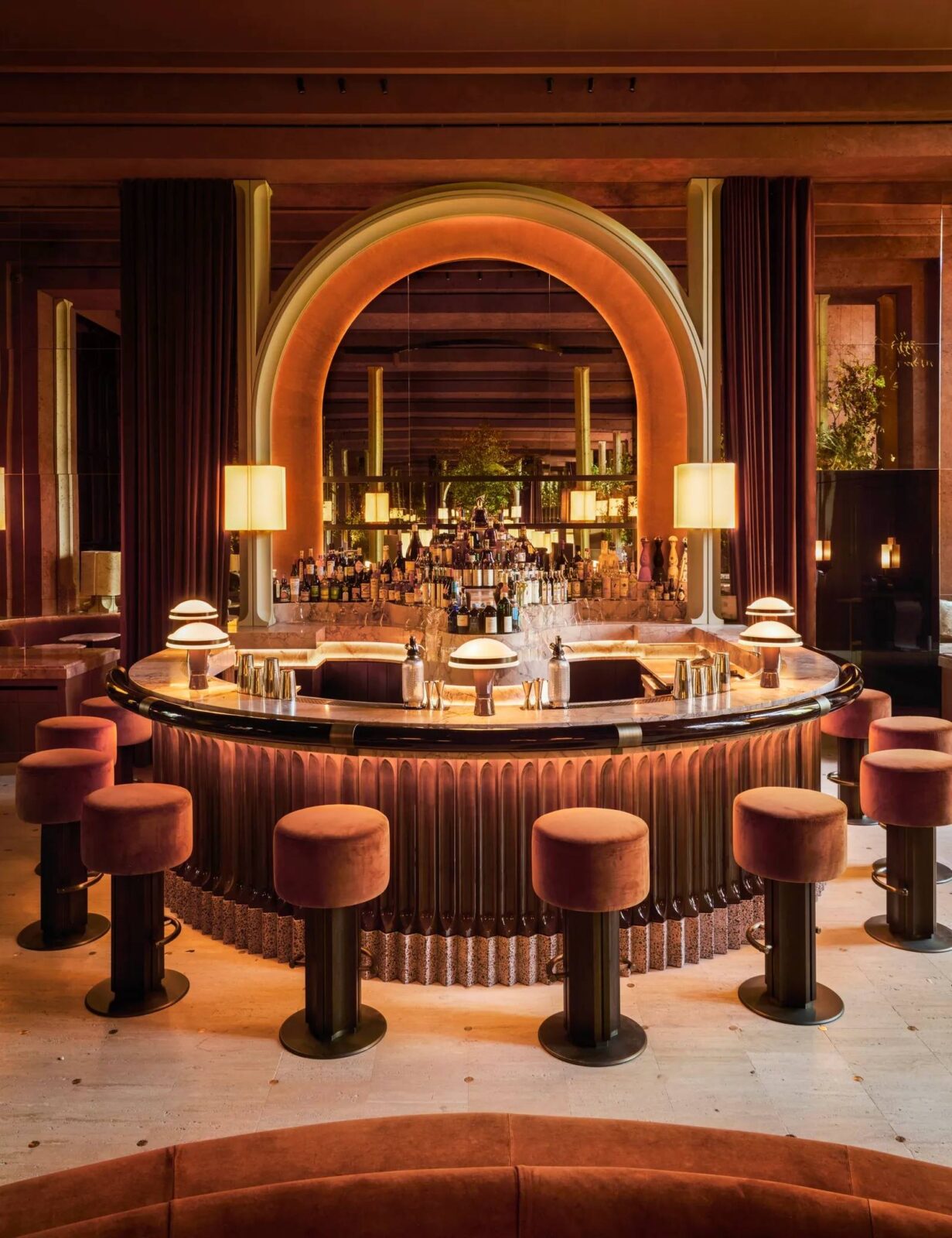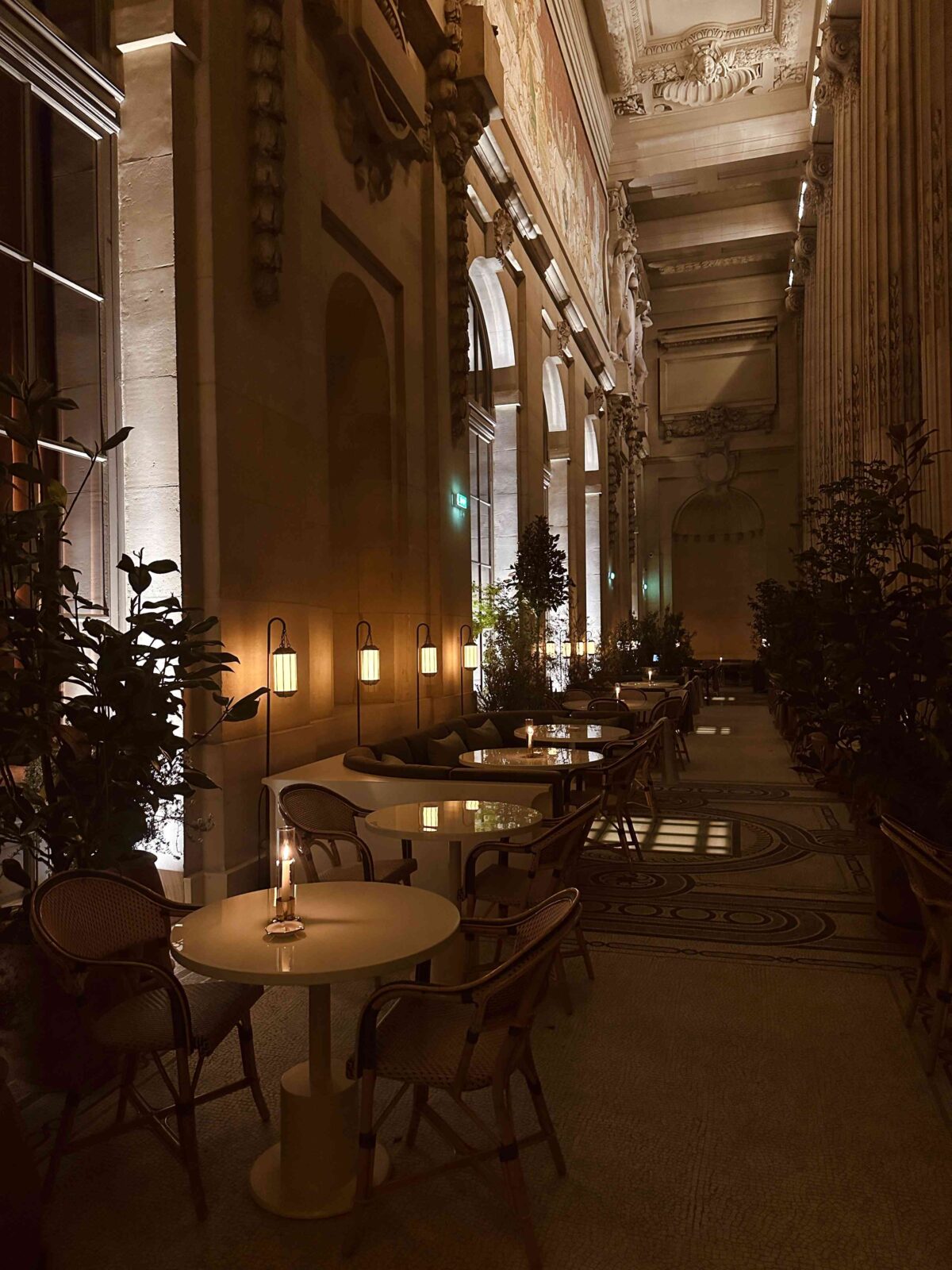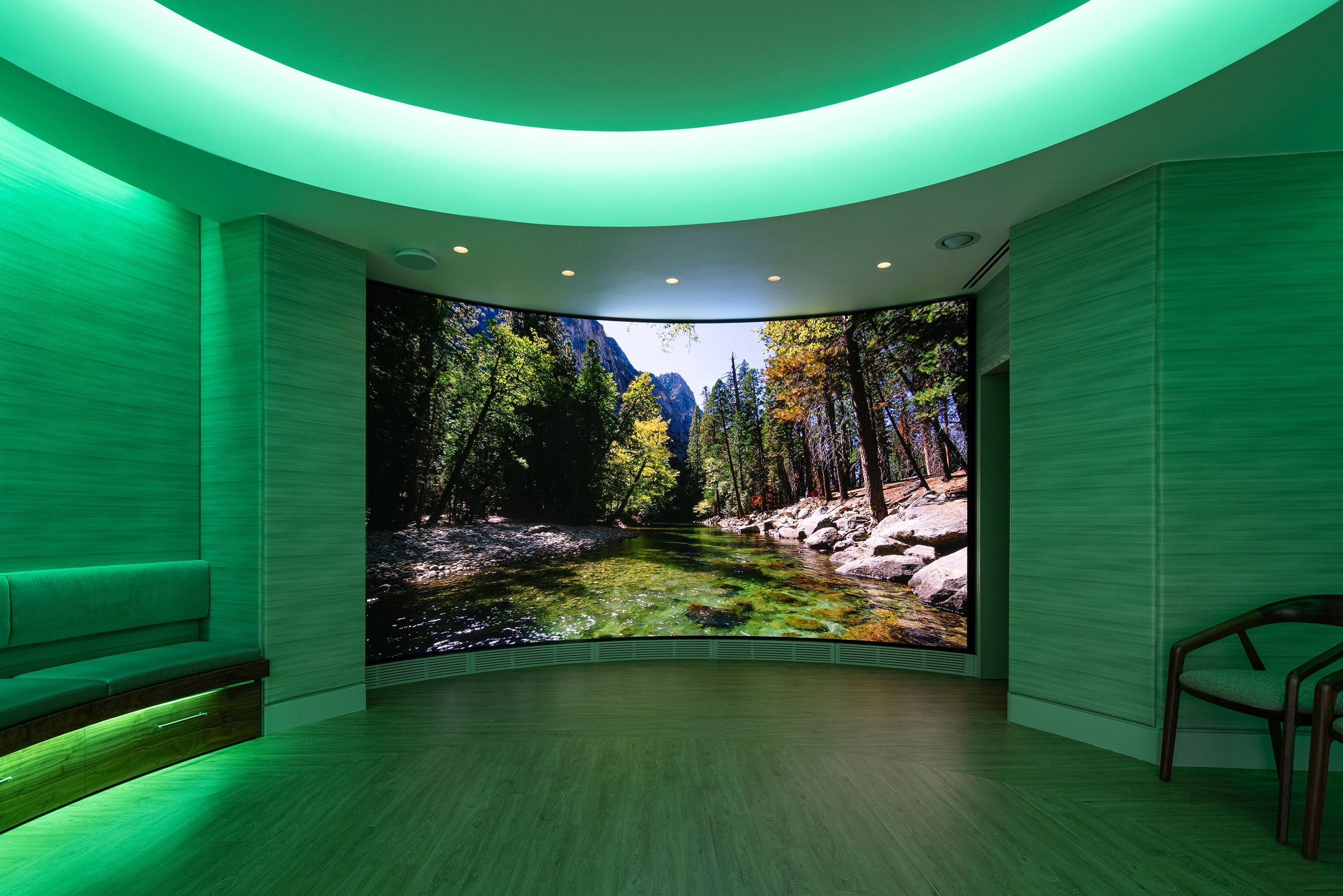Header: Matthieu Salvaing
Inside the iconic Grand Palais in Paris, where cultural events and an annual ice rink bring joy to Parisians of all ages, Le Grand Café was just unveiled. Perfect for an afternoon macaroon and coffee snack, the new venue is not only aesthetically dreamy but also has an award-winning lighting design. Hervé Descottes and his team from L’Observatoire International worked alongside Joseph Dirand Architecture to bring the project to life, marking a new addition that does not detract from the rich architecture of the Grand Palais. The project was completed earlier this year and brings the immense scale of the monument closer to the visitor through controlled, low-level illumination across the café’s different areas.


The design
The designers started by looking at the large, symmetrical spaces of the building in an attempt to figure out how to make them feel closer to the public and more comfortable. Instead of relying on big lights overhead, they decided to use lighting at table height so the room would feel more grounded and easier to relate to.
Each part of the café is handled slightly differently. The central bar is framed by a large arch that was intentionally lit from below to give it a clear presence without making it overpowering. Along the bar, slim linear lights and small spotlights provide enough light for people to see what they are doing while still keeping the overall mood calm and consistent with the rest of the space.

In the dining rooms, traditional chandeliers were exchanged with custom table lamps and sconces. These create a diffused field of warm light that complements the material palette of green marble, oak, and velvet. Narrow 6° beam spots focus on individual tables in an attempt to recreate the effects associated with candlelight, while hidden linear lights highlight specific architectural elements. The lighting suppliers involved (Secante, Folio, DGA Lighting, Atea, and Gau Lighting) provided fixtures that blend with the architecture, so the lighting works through many small, coordinated accents of light instead of depending on one main feature.
The technical setup is important in every part of the project. The direction of the beams, the warmth of the light, and the height of each fixture are all carefully adjusted so that mirrors, shiny surfaces, and daylight help create a balanced effect. Instead of flooding the rooms with one flat layer of light, the design uses soft contrasts, such as small highlights, edges, and soft shadows, to guide how people move through the space and to keep the atmosphere calm inside the large halls of the Grand Palais.


Sustainability
By removing overhead chandeliers and using a DMX-controlled system placed closer to the user, the project reduces excess lighting and focuses light only where it is needed. All fixtures are LED and work with dimming curves and daily programmes that lower energy use while keeping the brightness and tone consistent. The equipment is low-wattage and long-lasting, and the table lamps are modular so they can be repaired rather than replaced. The direction of each light, how it reflects, and how it interacts with materials are all carefully considered to keep the system efficient while still supporting the space’s needs.








